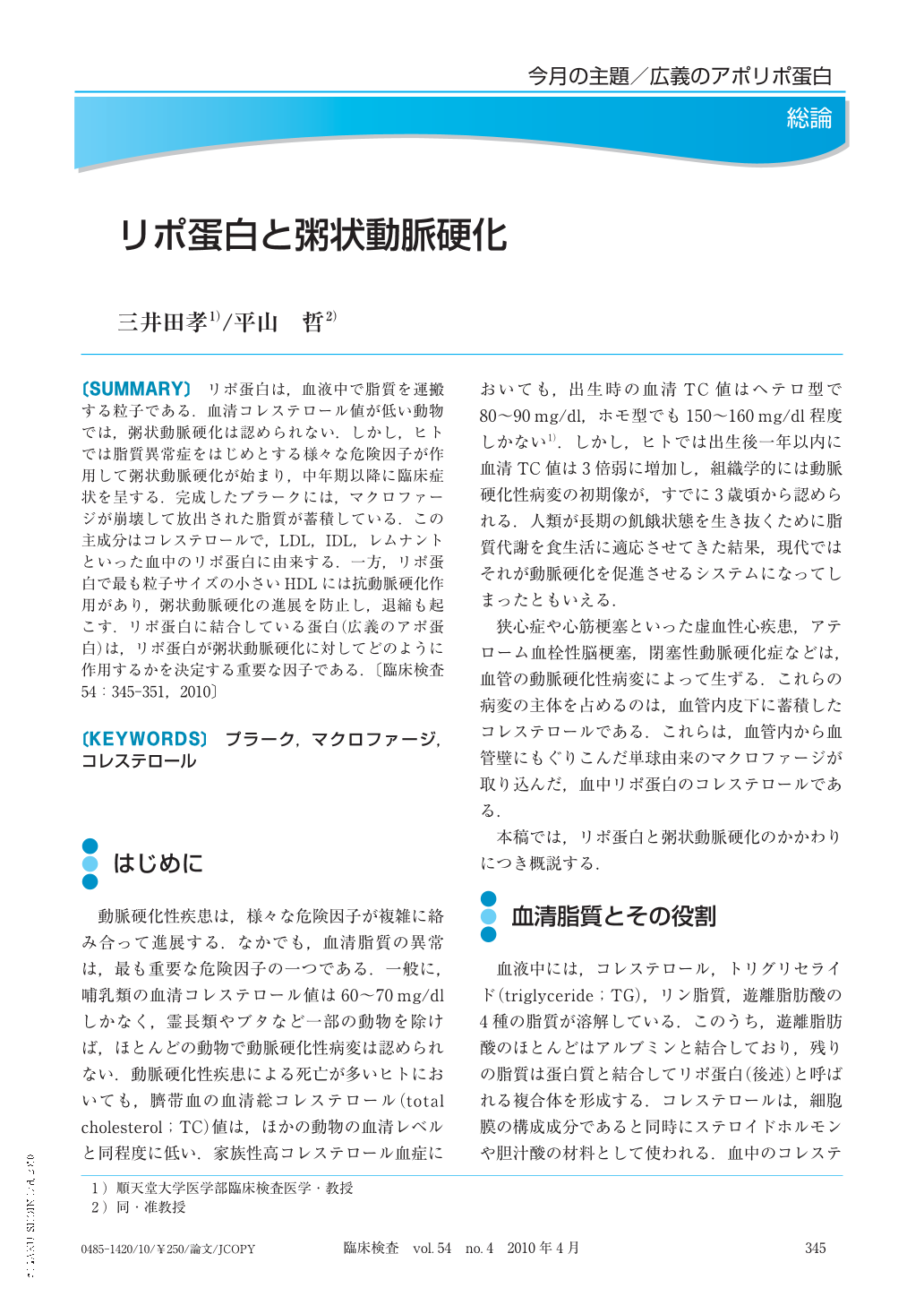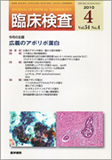Japanese
English
- 有料閲覧
- Abstract 文献概要
- 1ページ目 Look Inside
- 参考文献 Reference
リポ蛋白は,血液中で脂質を運搬する粒子である.血清コレステロール値が低い動物では,粥状動脈硬化は認められない.しかし,ヒトでは脂質異常症をはじめとする様々な危険因子が作用して粥状動脈硬化が始まり,中年期以降に臨床症状を呈する.完成したプラークには,マクロファージが崩壊して放出された脂質が蓄積している.この主成分はコレステロールで,LDL,IDL,レムナントといった血中のリポ蛋白に由来する.一方,リポ蛋白で最も粒子サイズの小さいHDLには抗動脈硬化作用があり,粥状動脈硬化の進展を防止し,退縮も起こす.リポ蛋白に結合している蛋白(広義のアポ蛋白)は,リポ蛋白が粥状動脈硬化に対してどのように作用するかを決定する重要な因子である.
Lipoproteins are particles which carry lipids in the blood circulation. In the animals whose serum cholesterol levels are very low, atherosclerosis is hardly detected. In humans, however, risk factors including dyslipidemia promote atherosclrosis. Clinical symptoms emerge usually after middle age. Histologically, cholesterol derived from macrophages accumulates in the atheromatous plaque. Such cholesterol is degradation products of serum lipoprpteins (LDL, IDL, and remnants). On the other hand, HDL is anti-atherogenic lipoprotein which inhibits development of atheroscerosis, and promotes its regression. Protein moiety of lipoproteins (broadly-defined "apolipoproteins") is an important determinant for the effects of lipoproteins on atherosclerosis.

Copyright © 2010, Igaku-Shoin Ltd. All rights reserved.


